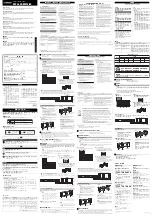
54
The current controller then comes into operation and limits the current to this set-point.
A thermal current model operating in parallel calculates a model temperature from the actually
flowing current. If this model temperature exceeds a critical value, continuous current is switched
to and the motor current is regulated to this. Only when the load becomes so small that the tem-
perature falls below the critical model temperature is peak current permitted again. The aim of this
so-called l2t current limitation is to prevent heating of the motor beyond the thermally permissible
temperature through appropriate selection of the continuous current. On the other hand, a high
load should be temporarily possible in order to enable very dynamic movements.
Functioning of the l2t current limitation:
Time
I
T
Model
T
critical
Load variation
I
max.
I
Duration
Time
I
Motor
I
Limitation
4.8.3 Overtemperature protection
If the MOSFET temperature of the external controllers or the coil temperature of the 3564K024B CS
exceeds a preset limit value, the motor is switched off. The following conditions must be fulfilled in
order to reactivate the motor:
Temperature below an internal preset limit value
Target velocity set to 0 rpm
Actual motor speed less than 50 rpm
Determining the coil temperature
The housing temperature is measured and the power loss concluded from the current measurement.
The MOSFET or coil temperature is calculated from these values via a thermal model. In most appli-
cations, this method represents a thermal motor protection device.
4.8.4 Under-voltage monitoring
If the supply voltage falls below the lower voltage threshold, the power stage is switched off. The
Motion Controller remains active. When the voltage returns within the permissible range, the power
stage is switched on again immediately.
4 Functional Description
4.8 Technical information
NOTE
















































